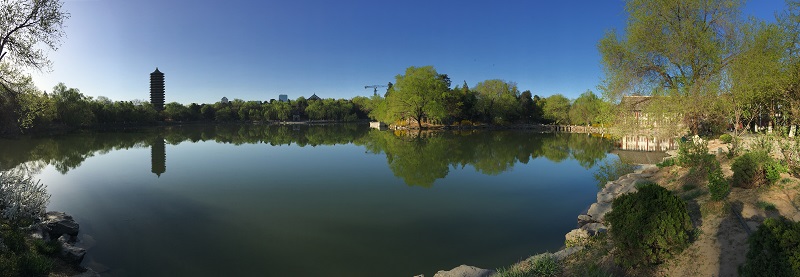Fast transmission of computer-generated hologram (CGH) has been one of research hotspots in optical information processing. Hologram is generated by recoding the interference pattern of the object wave and the reference wave, and then uses the reference light to re-irradiate the hologram to reproduce the original image of the object light, thus enabling the reconstruction of three-dimensional object information. The pixel size of CGH is 3.45×3.45μm2, which indicates that a CGH contains a large quantity of information, including the amplitude and phase information of an object, therefore, it requires a large amount of space for storage and bandwidth for transmission. To overcome this obstacle, Yang’s group proposes a two-stage compression framework for CGH with compressed sensing (CS) and quantum-inspired neural network (QINN). A deep learning-based CS model is applied to sample the CGH at sub-Nyquist rates to generate measurements, and its more compact and representative information using inter-block information is further extracted by quantum-inspired neural network. The proposed two-stage compression framework is shown to preserve more important holographic information during compression, which significantly improves the overall quality of reconstructed images compared to compressed sensing or quantum-inspired neural network. Additionally, compared with QINN, the computing cost of the two-stage method is reduced by about 250% to 290%, which enables the efficiency of holographic computation and the quality of reconstructed image recovery are greatly improved, therefore, it has great potential.
The research work is presented online entitled “Fast transmission of computer-generated hologram with compressed sensing and quantum-inspired neural network” on the Optical Engineering. Gengkun Luo, the 2020 master student of School of Electronics, is the first author; the Associate Professor Guanglin Yang is the corresponding author. Related research work was supported by the National Natural Science Foundation of China (No.62071009).
Link to the original text: https://caps.luminad.com:8443/stockage/stock/SPIE/LDL-SPIE-OE-20230002G/OE-20230002G_online.pdf
Link to the journal article: https://doi.org/10.1117/1.OE.62.5.053101
The figure below shows the CGH image and the corresponding reconstructed image.

Fig. CGH of a gray-scale “cameraman” image and corresponding reconstructed image:
(a) origi- nal “cameraman” image (128 × 128 pixels),
(b) CGH of (a) (256 × 256 pixels), and
(c) recon- structed image of (b) (256 × 256 pixels).




